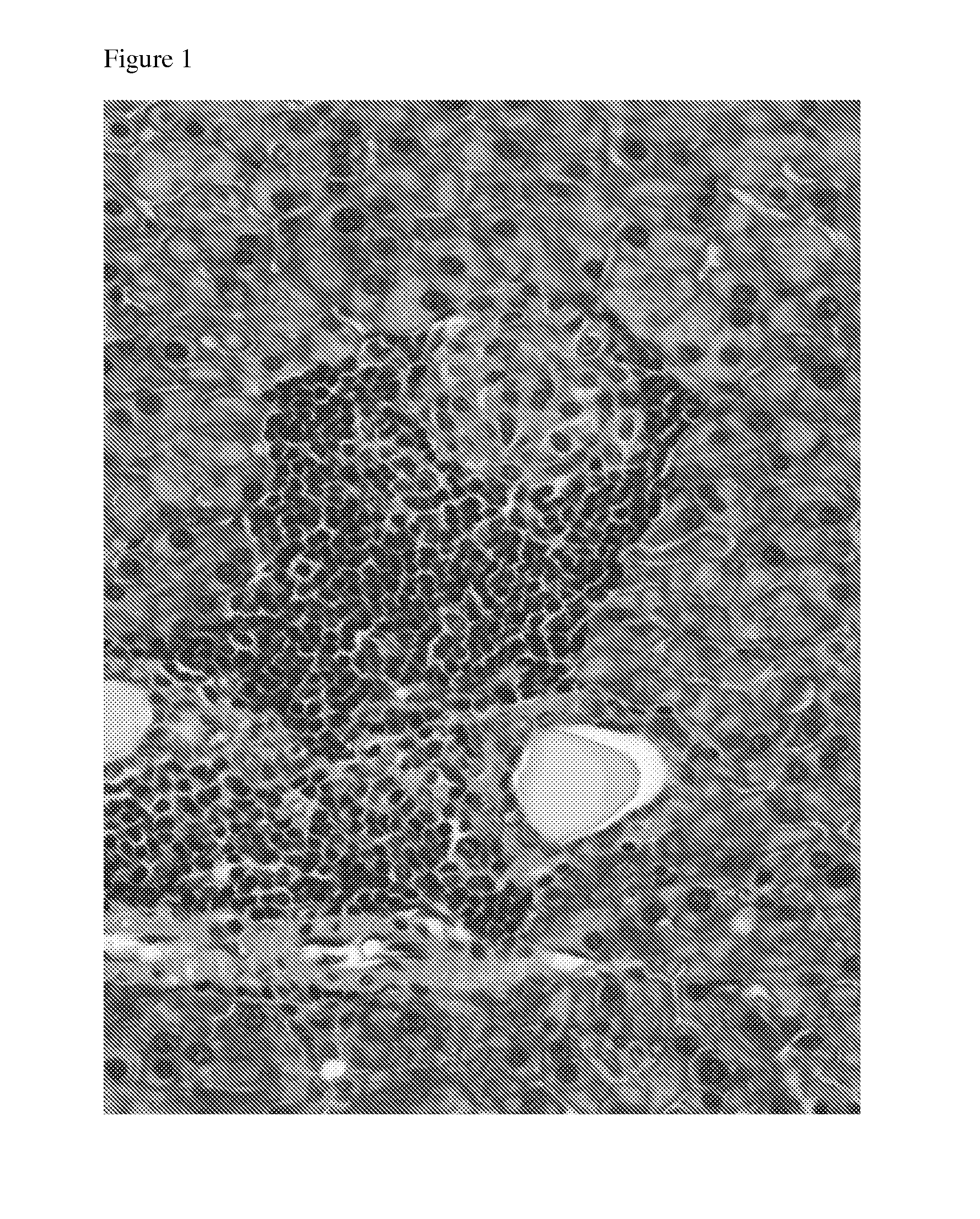Regeneration of islet beta cells by hsp60 derived peptides
a technology of islet beta cells and peptides, which is applied in the direction of peptide/protein ingredients, extracellular fluid disorder, metabolic disorders, etc., can solve the problems of residual functional beta cells and the schedule used for treating newly diagnosed t1d, and achieve the effect of increasing the beta cell mass
- Summary
- Abstract
- Description
- Claims
- Application Information
AI Technical Summary
Benefits of technology
Problems solved by technology
Method used
Image
Examples
example 1
Non-Obese Diabetic NOD Mice Model
[0123]Female non-obese diabetic (NOD) mice, which spontaneously develop autoimmune diabetes that mimics human T1D, are used to test the ability of the Hsp60 peptides and peptide analogs to induce regeneration of pancreatic beta cells. The NOD model is described, for example in Elias and Cohen (Lancet 1994, 343, 704-706). Female NOD mice raised under specific pathogen free (SPF) conditions develop insulitis around 4 weeks of age. Hyperglycemia begins at about 12-15 weeks and by 20-30 weeks almost all female NOD mice have developed serve diabetes and most die in the absence of insulin treatment. A revised NOD model is herein used, wherein treatment is began late in disease, after mice have lost most of their residual beta cells. In addition, the actual appearance of new beta cells, detected by increased C-peptide levels is measured in the revised protocol and not just preservation of initial C-peptide levels as in the original protocol.
[0124]Groups of ...
example 2
Animal Models for Beta-Cell Regeneration in Chemically-Induced Diabetes
[0135]The ability of DiaPep277 to induce or enhance beta cell regeneration is assessed in animal models in which diabetes is induce chemically and not via an autoimmune response (S. Lenzen, Diabetologia, 2008, 51:216-226).
[0136]In the high dose streptozotocin model (Arora et al., Global Journal of Pharmacology, 2009, 3: 81-84) a dose of 180 mg per kilo of streptozotocin injected IP destroys beta cells chemically and induces insulin-dependent diabetes within one week. This diabetes is not based on an autoimmune T cell effector reactive to beta cells, but is caused by direct chemical toxicity. This high dose streptozotcin model differs essentially from the repeated low dose model (40 mg / kg×5 described in Lukic et al., Developmental Immunology, 1998, Vol. 6, pp. 119-128) that induces an autoimmune disease.
[0137]In addition, the alloxan model of induced diabetes in mice is used in which chemical diabetes is induced w...
PUM
| Property | Measurement | Unit |
|---|---|---|
| particle size | aaaaa | aaaaa |
| size | aaaaa | aaaaa |
| cell mass | aaaaa | aaaaa |
Abstract
Description
Claims
Application Information
 Login to View More
Login to View More - R&D
- Intellectual Property
- Life Sciences
- Materials
- Tech Scout
- Unparalleled Data Quality
- Higher Quality Content
- 60% Fewer Hallucinations
Browse by: Latest US Patents, China's latest patents, Technical Efficacy Thesaurus, Application Domain, Technology Topic, Popular Technical Reports.
© 2025 PatSnap. All rights reserved.Legal|Privacy policy|Modern Slavery Act Transparency Statement|Sitemap|About US| Contact US: help@patsnap.com



